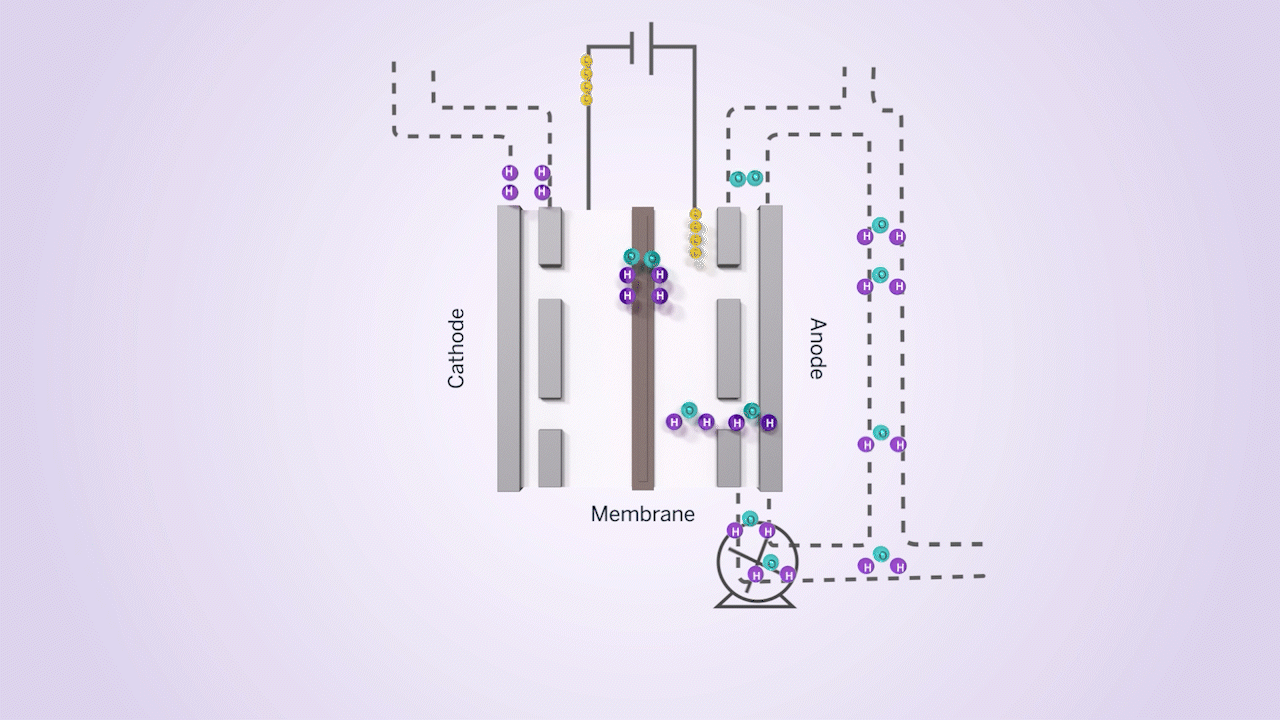PosHYdon is a new project 13 km off the coast of the Netherlands that will test the feasibility of mounting an electrolyser on a working oil and gas platform to produce hydrogen from offshore wind energy. Desalination equipment will turn seawater into demineralized water to be used in the electrolyser. If this works, using existing oil and gas installations could help to accelerate the production of offshore green hydrogen while avoiding the need to build new structures at sea.
The lessons learned from PosHYdon will help to accelerate offshore green-hydrogen production.
Challenges to overcome
PosHYdon features a 1.25 MW electrolyser. This unit will produce around 400 kg of hydrogen per day, or enough to fill up around 10 metropolitan buses. The electrolyser will be mounted in a container on the Q13a-A platform. Although small in comparison to what the market will eventually require, a 12-month sea trial will go a long way towards identifying gaps in the technology that need to be addressed to make a commercial offering of offshore electrolysers and associated energy infrastructure. The lessons learned from PosHYdon will help to accelerate offshore green-hydrogen production.
Construction materials and fully remote operation will be a challenge. An electrolyser at sea has to contend with salt spray and associated corrosion risk. “Maintenance and servicing intervals are also going to have to be much longer too—perhaps up to a year,” says Everett Anderson, Vice President for Advanced Product Development at Nel.
“As an example, we use a combustible gas sensor within the electrolyser that needs to be calibrated every three months, much too short an interval for an offshore facility where service engineers have to be flown out by helicopter. We need to find a way to do that calibration remotely, and also work out where we need to build in additional compensatory components should primary systems fail,” Anderson says.

Recycling existing infrastructure
Making good use of existing platform and pipeline infrastructure is not the only imperative. An inescapable cost is transmission cables to carry the power produced at sea back to shore, not to mention upgraded or even newly installed grid capacity required to carry that power to homes and businesses within a given geographical region. An additional problem is the limitations of power cables: these include maximum voltage and current load, and the effect of attenuation, where electromagnetic resistance leads to energy being lost to the environment.
If offshore wind turbines could be used to produce hydrogen at sea, there would be no need for the cables back to shore. Theoretically, wind turbines could operate at maximum output capacity, and the hydrogen generated pumped through existing pipelines for direct use in industry and transport.